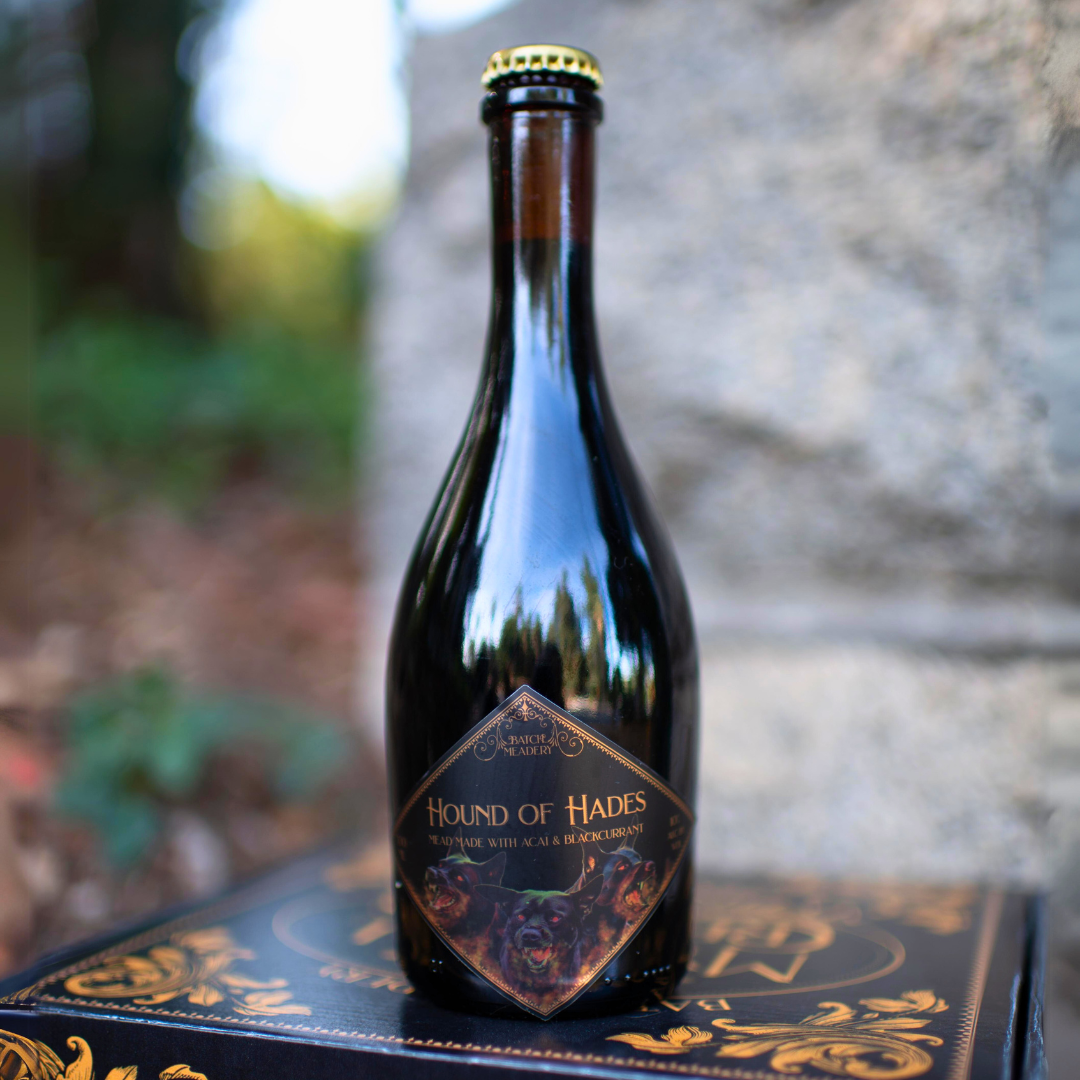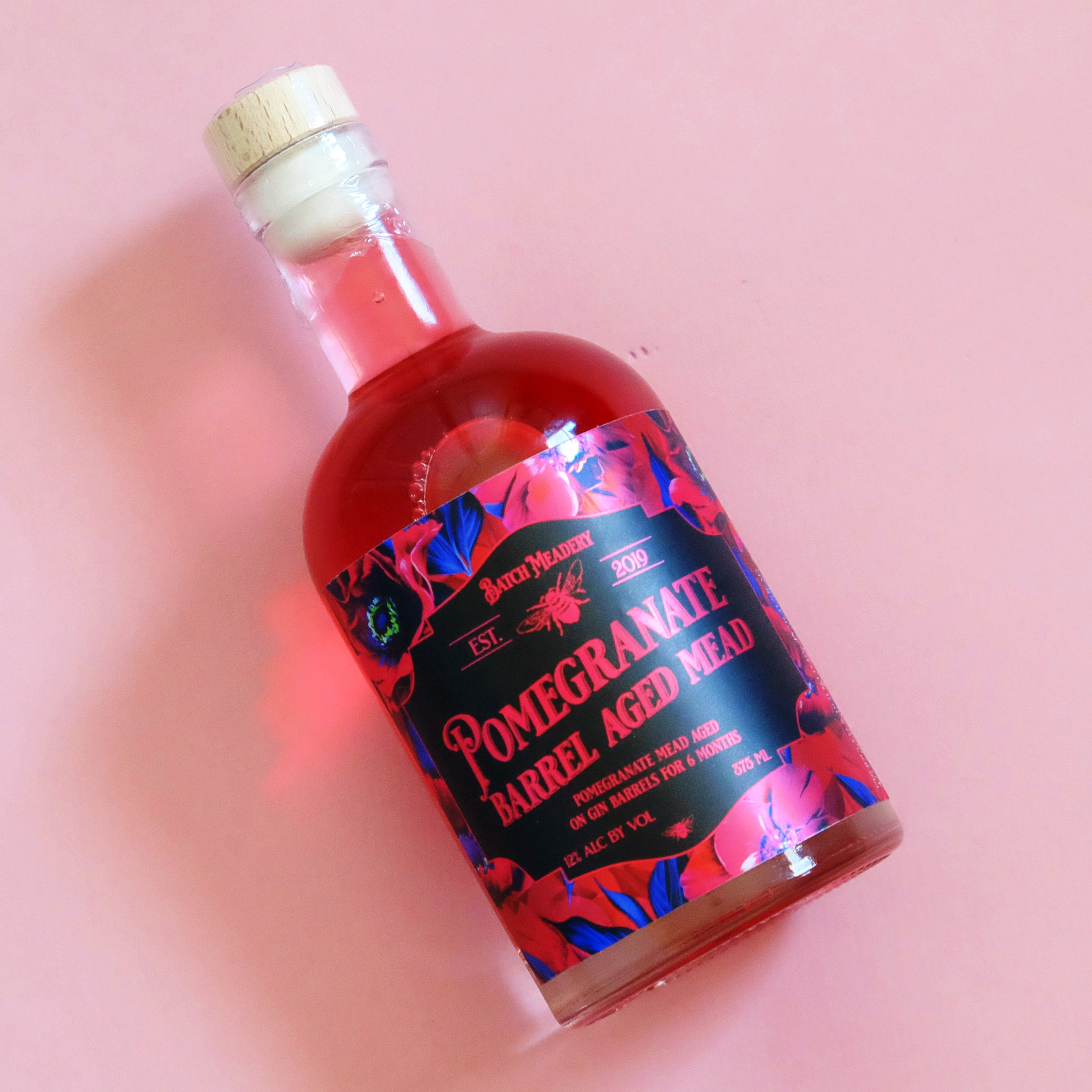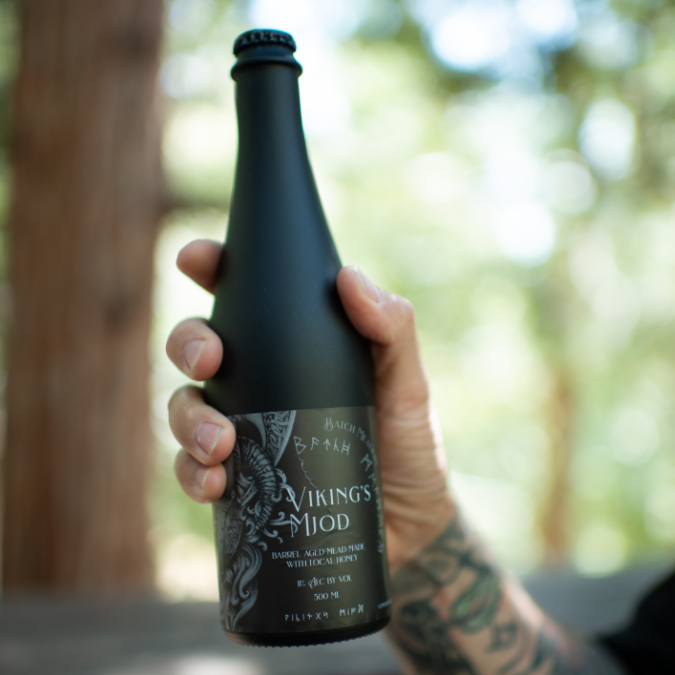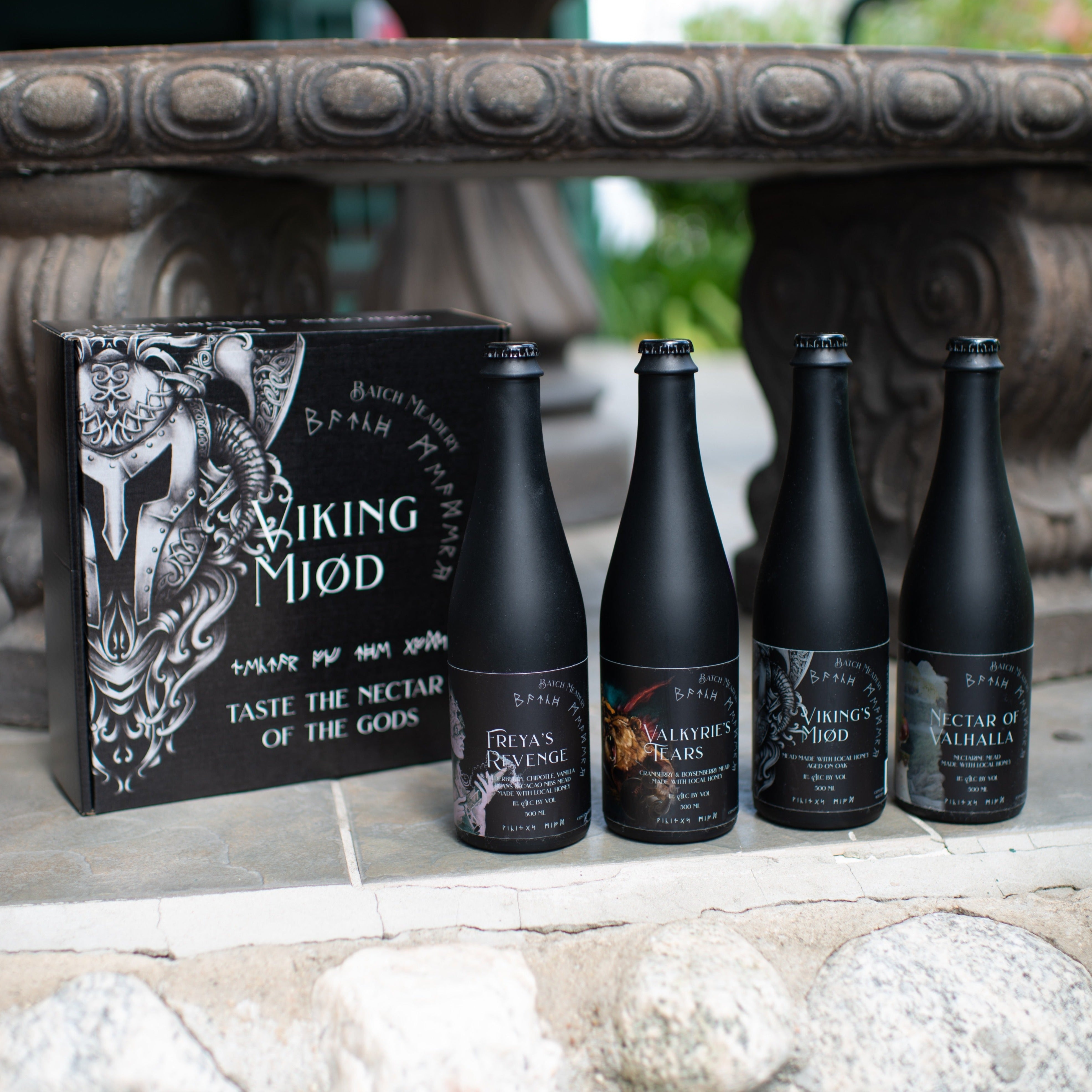Welcome, aficionados of the finer sips in life! Today, we gather around the digital hearth to explore an elixir that has whispered through the annals of history, capturing the imagination of wine enthusiasts, beer aficionados, and history buffs alike. Whether you’re a seasoned mead lover or new to the realm of this ancient beverage, there’s always something new to discover about mead, especially its alcohol content.
In recent times, mead has seen a resurgence, stepping out from the shadowy lore of Norse gods and medieval banquets to grace our tables with its rich, nuanced flavors. But what exactly goes into determining the alcohol content of mead? And more intriguingly, what does this mean for you, the discerning sipper?
Mead’s Mighty Range
The alcohol content in mead can swing from a delicate 3.5% ABV to a robust 23% ABV. That's right, from light and spritzy sessions perfect for a sunlit garden gathering to hearty imperials that command the end of a meal with the authority of a dessert wine. But how does mead span such a wide spectrum of alcohol content?
Essentially, it boils down to the art of fermentation, where yeast works its magic on honey’s sugars, transforming them into alcohol. Unlike beer, which sources its fermentable sugars from grains, or wine, which relies on grapes, mead’s sweetness and potency come from the golden essence of honey.
What Exactly IS mead?
Mead might run the gamut when it comes to ABV, but its ingredients are actually quite simple: water, yeast, and honey. Of course, a mead maker can flavor further with ingredients like fruits, spices, and grains; however, mead’s base DNA remains true. Three ingredients.
Funny enough, mead might’ve been discovered by accident back in the day (and we mean way back in the day), the result of rainwater collecting with honey and natural airborne yeast.
Regardless, mead has endured the ages and ranks today as the world’s oldest alcoholic beverage. It’s neither beer or wine, nor is it liquor. A few key differences: beer is boiled, mead is not. In the same vein, liquor is distilled, mead is not. Then there’s the ABV which, as you now know, is higher than both beer and wine on average.
Understanding Mead’s Alcohol Content
Hopping aboard the mead train? Good call. Whether you’ve tried mead before and are doing some further exploring or this is your first foray into the nectar of the gods, there’s plenty to learn.
Gone are the days when mead mimicked wine with a 10 to 14% ABV; we can thank sessions and imperials for that. Now, mead making is all about matching the market – something with a low ABV that can be enjoyed throughout the day? Sure. Something heavy-hitting that’s bursting with flavor (and alcohol)? That too.
Mead gets its alcohol content like any fermented beverage – from yeast. The yeast metabolizes sugar, producing alcohol. Beer gets its sugar from grain. Wine collects from grapes. And mead? Honey.
About that…
- Variety is the Spice of Life: With an alcohol by volume range that leaps from 3.5% to 20% and beyond, mead embraces diversity. It can be dry, off-dry, semi-sweet, or luxuriously sweet, regardless of its strength, showcasing its versatile character.
- Fermentation's Finer Points: The secret to mead’s alcohol content lies in its simplicity – water, yeast, and honey. Yet, this simplistic foundation paves the way for immense creativity through the addition of fruits, spices, and even grains. The term "honey wine" is often synonymous with mead, but it's important to note that adding honey to grape based wine is not mead unless 50% of the fermentables come from honey
- A Toast to Tradition – and Innovation: While mead might trace its roots back to accidental discovery, today’s mead makers are anything but accidental in their craftsmanship. They precision-engineer their brews to cater to modern palates while nodding to mead’s rich legacy.
The Spectrum of Mead’s Delights
- Hydromels: These “session meads” or “seltzer style meads” are on the lighter end of the alcohol scale, making them perfect for leisurely enjoyment. Flavor is keenly balanced here, with mead makers often employing fruits or post-fermentation sweetening techniques to amplify the honey’s presence.
- Sack Meads: Standing at the other end are the “standard meads” or “sack meads,” rich and opulent with higher alcohol content. These meads are often sweeter, densely packed with honey’s essence, creating a sumptuous experience.
The Many Faces of Mead
Mead enthusiast or curious explorer, here’s a quick primer on the types you might encounter:
- Traditional Mead (SHow Mead): The purest expression of mead with honey, water, and yeast. 7.5 to 14% ABV
- Sack Mead (Great Mead): The heavyweight champion of the mead world with a higher alcohol kick.14 to 18% ABV
- Hydromel (Session Mead) : Light and refreshing, these meads are perfect as an everyday sip. 3.5 to 7.5% ABV
- Melomel and Metheglin: These meads dance with the addition of fruits or spices, respectively, offering an array of flavors to entice any palate.
Whether you're drawn to the purity of a traditional mead or the rich complexity of a fruit-infused melomel, each type offers a unique window into the world of fermented honey.
For a full rundown of mead types, check out our guide, Types of Mead: The Ultimate Guide to Mead Classifications.
Do Low-Alcohol Meads Taste Differnt Than High-Alcohol Meads?
Imparting flavor in a low-alcohol mead is one of the nuances of pro mead making. Honey can quickly become diluted at sugar levels needed for hydromels; mead makers can account for this with added fruits, or by “back-sweetening” (adding honey in post-fermentation) for low ABV sweet meads.
High-alcohol meads will pack more of a flavor punch. This is because the higher ABV translates to more honey being used during fermentation.
Just like low-alcohol meads, though, the process comes with its own challenges. Higher ABV means a more fragile balance between alcohol and sugar content. It’s no surprise that high-alcohol meads are often sweeter than most other varieties and make for great after-dinner beverages.
The Bottom Line
Mead’s alcohol content is as varied as the history it carries, offering something for everyone, from the casual sipper to the serious collector. By understanding what influences mead's ABV, you’re better equipped to select the perfect bottle that aligns with your taste preferences and occasion.
Ready to take a deeper dive into the world of mead? Whether you’re brewing your own or sampling the wide array offered by artisans around the globe, remember that mead is more than just a drink. It’s a connection to history, a celebration of craftsmanship, and an invitation to explore the vast landscape of fermented beverages.
For those eager to explore further, remember, our community is a place where we cherish the craft, celebrate the artisan, and always welcome new enthusiasts into the fold. Here's to your next glass of mead — may it spark conversation, curiosity, and perhaps a bit of the ancient mystique that mead has carried through the ages.
Join us on this flavorful quest and become part of a story that spans millennia. Cheers to the endless possibilities that a simple blend of honey, water, and yeast can offer!
Brewing your own mead? Check out our step-by-step guide to mead making.

Hound of Hades Mead

Pomegranate Barrel Aged Mead

Viking Mead
About Us
MEAD (HONEY WINE) IS A PASSION FOR US
We started Batch Mead in 2019 to leave our Silicon Valley tech careers and pursue our real passion, MEAD!
We love locally sourced honey, apples and other ingredients. We focus on small batches to keep taps rotating and deliver delicious meads and hard ciders.
We believe mead is an experience, and our tasting room reflects all the notes of that ideal experience.
We recently won Best in Show from the San Diego International Beer Festival (2020, 2021 & 2022)! As well as several other wine, beer & mead awards!
References:
- https://en.wikipedia.org/wiki/Mead
- Schramm, Ken (2003). The Compleat Meadmaker: Home Production of Honey Wine From Your First Batch to Award-winning Fruit and Herb Variations. Brewers Publications. ISBN 978-0-937381-80-9.
- Hornsey, Ian (2003). A History of Beer and Brewing. Royal Society of Chemistry. p. 7. ISBN 978-0-85404-630-0.
- "Mead | Definition, Production, & History | Britannica". www.britannica.com.
- Acton, George William Bryan; Duncan, Peter (1984). Making mead : a complete guide to the making of sweet and dry mead, melomel, metheglin, hippocras, pyment and cyser. Ann Arbor, Mich.: G.W. Kent. ISBN 0961907282
- "Prehistoric China - The Wonders That Were Jiahu The World's Earliest Fermented Beverage. Professor Patrick McGovern the Scientific Director of the Biomolecular Archaeology Project for Cuisine, Fermented Beverages, and Health at the University of Pennsylvania Museum in Philadelphia"
- McGovern, P. E.; Zhang, J; Tang, J; Zhang, Z; Hall, G. R.; Moreau, R. A.; Nuñez, A; Butrym, E. D.; et al. (6 December 2004). "Fermented beverages of pre-and proto-historic China"


